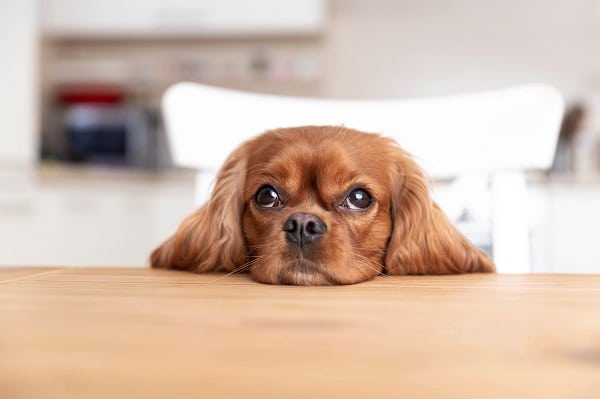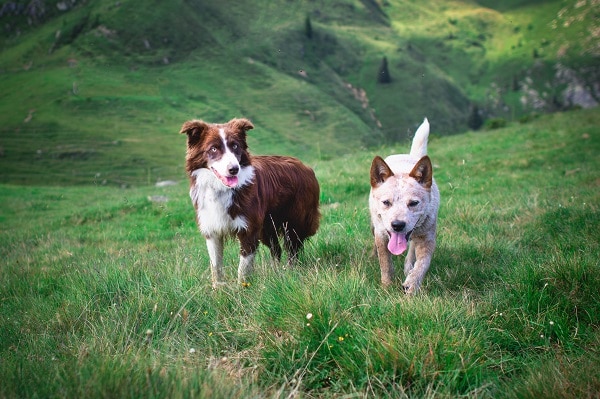Irrespective of the breed, all dogs are adorable to their parents. Rolling in the mud, yapping at your feet, drooling for treats are all acts of cuteness and laughter. But there are some things that your dog may do not for the laughs but due to discomfort. Dogs dragging their butt across the floor incites bursts of laughter from their parents, but there is a reason behind such behavior.
Animals cannot convey their pain unless, of course, it is an external injury. However, when suffering from internal issues, they too are unaware of what they are going through, and so to communicate, animals use actions and signs. One such action is scooting. Dog scooting is no laughing matter; when you notice your fur baby scooting, understand that something is wrong.
Contents
Why Does Scooting Happen?

There are various reasons behind dog scooting, but the two most common are itching or pain in the butt area. Just as humans scratch an itch to alleviate discomfort, dogs drag their butt across the floor to get rid of the irritation. So why do dogs experience itching and pain in the butt area? Many things cause itch and pain in the butt area, but the common culprit is, impacted or infected anal glands.
The anal glands in a dog’s body are on either side of the dog’s anus. In typical cases, these glands excrete a smelly liquid every time a dog poops (this is most likely to mark the territory). However, in some cases, due to inflammation, the glands cannot excrete this liquid with stool. Hence this liquid builds up inside the two sacs, becoming thick into a paste form than a liquid.
These full anal glands become very uncomfortable for the dog and can even lead to infection. Apart from these common issue’s intestinal parasites, injuries, tumors (around the anus), allergies, and rectal prolapse are also probable causes of dog scooting. In addition to scooting, you will also notice your dog licking his rear end excessively.
What To Do About Dog Scooting?

Now that you are aware of the problem, the next step is to know how to address the issue. If you notice your dog scooting only once or twice, you need not worry as much. It all depends on the frequency. If you see your dog scooting only here and there, it might just be an itch. If your dog is scooting more frequently, there might be a problem. You can try cleaning the butt area with some gentle shampoo using a soft washcloth. Make sure you rinse the area clean, so there isn’t any soap left behind. Next, dry the area gently and well using a clean towel.
When To See A Vet?

If the dog scooting persists for more than just once a day and continues for several days, it might be time to see a vet. If you have a regular vet you visit, they will have your dog’s records which are quite helpful. The vet will first conduct a rectal exam to assess the condition of the anal glands and to see what could be the cause. Next, they will check for any inflammation or infection in the anal region. Your vet is also likely to conduct a fecal exam to check for signs of worms or intestinal parasites.
If the result for parasites comes back positive, your vet will most probably prescribe a deworming medicine for your pet. The medicine will help expel such parasites from the intestines through the dog’s poop; this should be enough to put a stop to your dog’s scooting issue. If there are other reasons behind such behavior, such as impacted anal glands, the vet might have to sedate the dog to inject medicine into the anal glands to clear them out. In severe cases, the vet might have to operate to remove the anal glands.
How To Avoid Dog Anal Gland Issues And Dog Scooting?

Adding fiber to your dogs’ diet is an excellent precaution you can take to avoid inflammation of anal glands. The fiber in the diet will make the dog’s stool firm; this will make it easier for the glands to express independently. You can do this by adding plain canned pumpkin to your dog’s food. Commercial anal gland supplements are also a viable option. The best option would be to get your vet to prescribe some supplements.
What To Do About Chronic Anal Gland Distress?

If your dog frequently develops impacted or full anal glands having them expressed manually might be the best option. You can have this done by your vet, or if you are not too squeamish, you can learn how to do it yourself. However, it is important to note that not all dogs require this. Some groomers tend to express the anal glands while bathing the dog routinely, but it is important to note that this is unnecessary.
Sometimes the needless expression of the anal glands can cause harm. So, the next time you take your dog to the groomers, make sure you ask them to avoid expressing the anal glands. The anal glands are delicate organs and can be injured due to unnecessary pinching and squeezing. However, these glands should function independently without any external help, so if your dog is healthy, this organ will perform optimally.
If your dog experiences recurrent or chronic anal gland issues, it is necessary to identify the root cause of the issue rather than getting repetitive treatments. Remember, these regular treatments take a toll on your dog. Squeezing the anal glands is particularly uncomfortable for your dog. In addition, due to unformed poop, these anal glands do not get the right pressure to excrete the liquid. To avoid this, make sure you give your dog a balanced and appropriate diet that keeps the stool consistency issue in check. As mentioned above, for watery, unformed stools, adding pumpkin to the food is a great remedy.
In Summary
That is all you would need to know about your dog’s scooting problem. But, remember, if left unchecked, this issue can develop into a chronic illness. So, make sure you take proper care of your dog, and in case the issue continues, visit the vet immediately.


